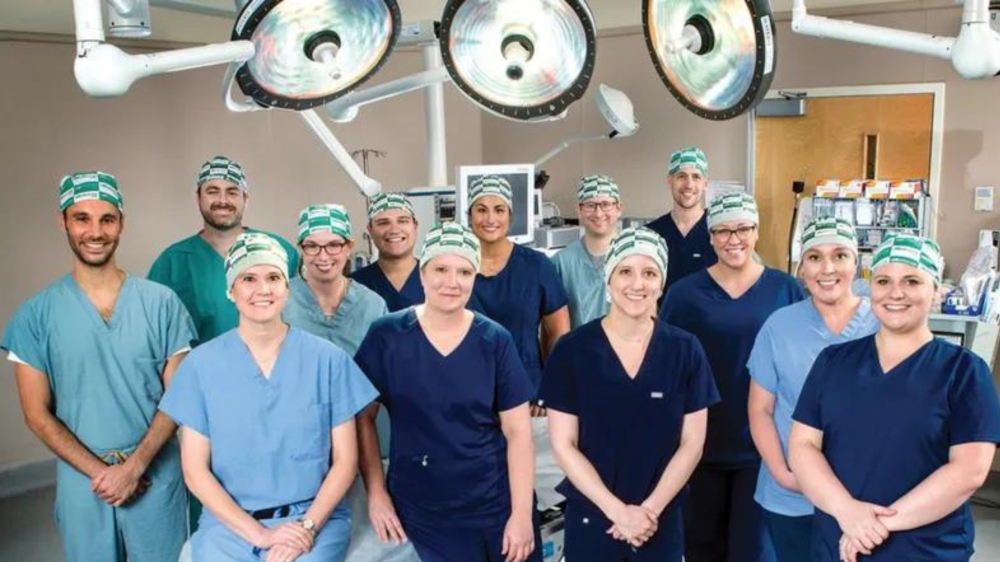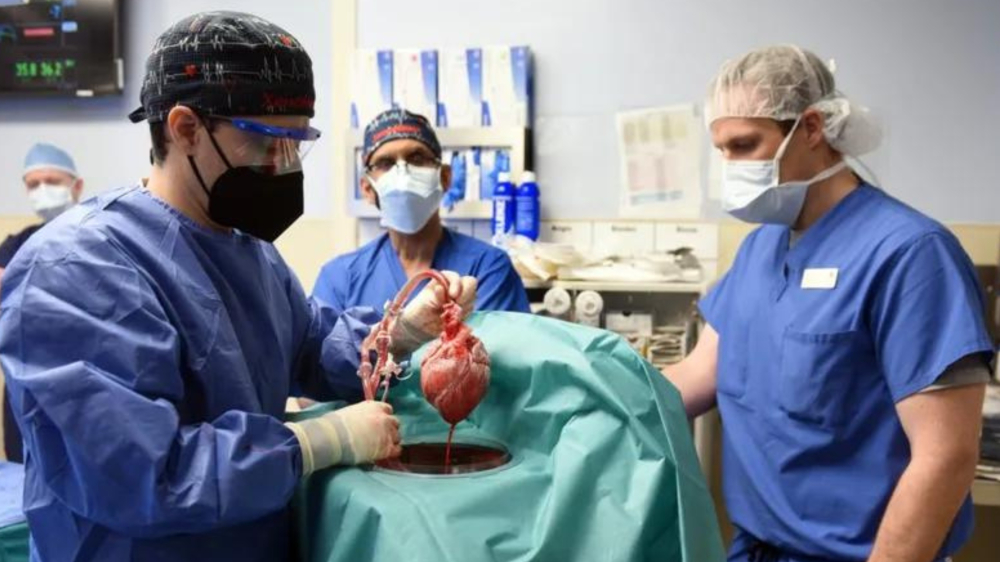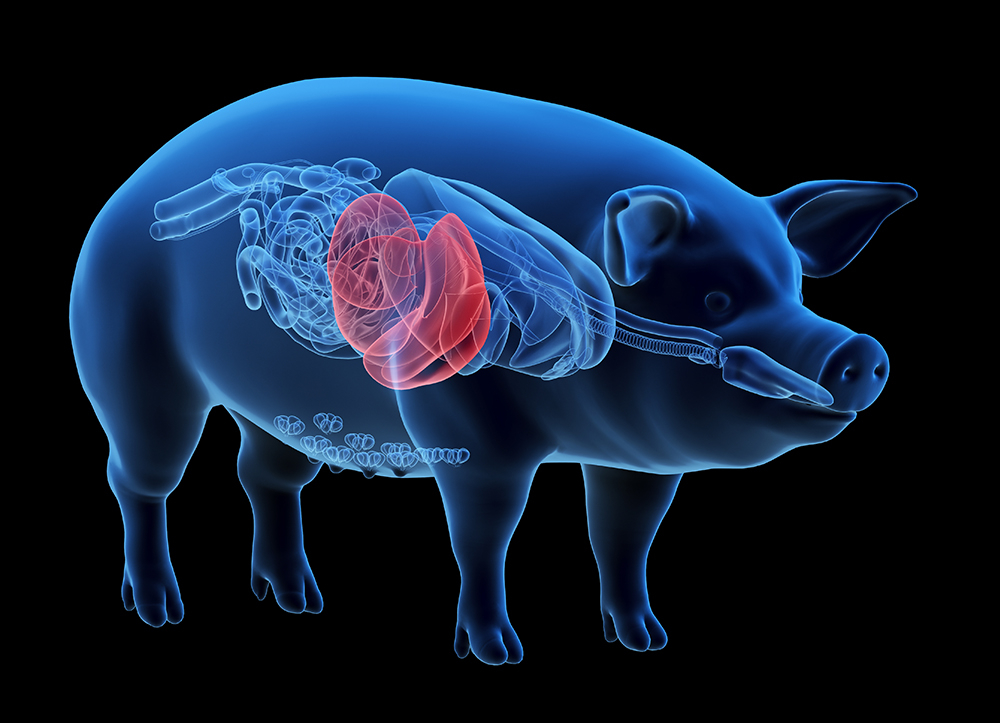Hope raised by animal organ transplants
We use Google Cloud Translation Services. Google requires we provide the following disclaimer relating to use of this service:
This service may contain translations powered by Google. Google disclaims all warranties related to the translations, expressed or implied, including any warranties of accuracy, reliability, and any implied warranties of merchantability, fitness for a particular purpose, and noninfringement.


We have already read the story of Lord Shiva cutting off Ganesha's head and reviving him by attaching the head of an elephant. This is what 'Xenotransplantation' is all about. Transplantation of an animal organ into a human is called xenotransplantation. It's been decades since studies began to see whether an organ harvested from an animal would work as a substitute for human organs that have stopped working for various reasons.



In recent years, hearts and kidneys from genetically modified pigs have been transplanted into humans. It has given hope to those who have been waiting for years to get a healthy organ. However, xenotransplantation is not likely to be recorded as a common treatment method for a few more years.
Genotransplantation is currently being used for research in people with no hope of survival in the US. Initially, xenotransplants were performed in brain-dead patients. Pig hearts and kidneys were transplanted into living people with no choice after their transplanted kidneys functioned normally. People who received pig hearts and kidneys died a few months after the transplants. According to the claim of the doctors and scientists working on their health monitoring, the death of both of them seems to be due to other reasons than the complications related to the transplant.
Nobel Prize winning French surgeon Alex Carell developed a method of connecting two different veins that paved the way for organ transplantation. Because of this, in the 20th century there were various attempts to transplant organs from chimpanzees to humans. Around 1963-64, American surgeon Keith Riemsma transplanted chimpanzee kidneys into 13 patients. In 1992, he transplanted a baboon's liver into a human.
Xenotransplantation, a technique in which animal organs are transplanted into humans, has been seen as a potential solution for decades. This can make the kidney more widely available. But the challenge is that when the human immune system rejects another's tissue, it can lead to life-threatening complications. Even organs taken from well-matched donors are at risk of rejection by the body in the long run, experts say. Scientific advances, including gene editing and cloning, have brought xenotransplants closer to reality. This has made it possible to modify an animal's genes to make organs more compatible and less likely to be rejected by the immune system.
Inter-species transplantation (xenotransplantation) offers the possibility of an unlimited supply of organs and cells needed for therapeutic transplantation. This can address the problem of the majority of patients on the waiting list to receive transplants due to the shortage of human organs. Between the 17th and 20th centuries, the blood of various animals was given to humans to treat various ailments. In the 19th century, a variety of animal skins were transplanted into humans, most commonly from frogs.
 In the 1920s, French surgeon Serge Voronoff began transplanting parts of chimpanzee testicles into elderly men. According to his claims, it helped give new vigor to the elderly. However, his claim was later proved wrong. The method of connecting two different nerves developed by the French surgeon Alex Carrell, who won another Nobel Prize, paved the way for organ transplantation. Because of this, in the 20th century, there were various attempts to transplant organs from chimpanzees to humans.
In the 1920s, French surgeon Serge Voronoff began transplanting parts of chimpanzee testicles into elderly men. According to his claims, it helped give new vigor to the elderly. However, his claim was later proved wrong. The method of connecting two different nerves developed by the French surgeon Alex Carrell, who won another Nobel Prize, paved the way for organ transplantation. Because of this, in the 20th century, there were various attempts to transplant organs from chimpanzees to humans.
Around 1963-64, American surgeon Keith Riemsma transplanted chimpanzee kidneys into 13 patients. Out of which one woman survived for about 9 months. Another American surgeon, James Hardy, performed the first human heart transplant in 1964. But the patient died within 2 hours of the transplant. Another American doctor, Thomas Straz, transplanted a chimpanzee into a black man in 1966. Similarly, in 1992, he transplanted the liver of a baboon, a species of monkey, into a human. The man lived for 70 days.
There have been many animal studies over the past few decades. Most of these studies involved transplantation of pig organs into baboons, a species of monkey. Baboons were selected for use because their genetic makeup is very similar to that of humans. Such studies have shown that organ transplantation is possible in animal species. However, its clinical trials in humans have not yet begun.
Why xenotransplantation is important is that it can largely address the current global organ shortage. Not only in Nepal but all over the world millions of people are waiting for transplant because their organs are not working. Kidneys and livers can also be obtained from living donors. Yet millions of people around the world live on dialysis. Hearts, lungs, livers, and skins obtained from brain dead patients are also transplanted into sick people. But even for that, the wait is long. For this reason, efforts have been made to see if the organs obtained from genetically modified pigs can be transplanted into humans.
It has been almost two decades since kidney transplantation started in Nepal. Nepal is also making good progress in liver transplantation. According to government data, the number of patients living on dialysis in Nepal due to kidney failure is around 7,000. For most of them, if organs can be provided, life can be made easier. Similarly, the number of patients who need a liver transplant is also thousands. Heart and lung transplants have not yet started in Nepal. But related experts say that the number of patients who need heart and lung transplant in Nepal is also huge. Most of the patients are forced to euthanize because they cannot get the organs in time.
An organ obtained from a pig has three genes removed so that it will not be rejected by the human body. In addition, seven human genes are incorporated to enhance human compatibility. Since pigs are carriers of retroviruses, the virus that can be transmitted to humans is also inactivated. If kidneys extracted from genetically modified animals can be transplanted in large quantities, the practice of dialysis may end, said Dr. Leonardo B. Riela said.
 According to him, more than eight million Americans have kidney failure and need dialysis to filter toxins from the blood. More than 100,000 are on the waiting list for a kidney transplant from a living or deceased human donor. Dialysis keeps people alive, but the best option is organ transplantation. But due to severe shortage of organs, thousands of patients die every year waiting for a kidney. A total of 25,000 kidney transplants are performed in the United States each year.
According to him, more than eight million Americans have kidney failure and need dialysis to filter toxins from the blood. More than 100,000 are on the waiting list for a kidney transplant from a living or deceased human donor. Dialysis keeps people alive, but the best option is organ transplantation. But due to severe shortage of organs, thousands of patients die every year waiting for a kidney. A total of 25,000 kidney transplants are performed in the United States each year.
In September 2021, surgeons at NYU Lagoon Health in New York attached a genetically modified pig kidney to a brain-dead person. In that person it started to work and make urine. Not long after, scientists at the University of Alabama at Birmingham announced the success of a similar experiment. Surgeons at the University of Maryland have twice transplanted hearts from genetically modified pigs into patients with heart disease. In them the organ had worked in the beginning and the body had not rejected it. But after some time, both the heart transplanted patients died due to the nature of their disease.
Patients who agree to these types of cutting-edge experimental treatments are often extremely ill and have few options available to them. Often they do not qualify for the waiting list to receive a human organ. This week, a woman was transplanted with a pig kidney at NYU Lagoon in New York, USA. Due to serious heart problems, the kidney of the woman who was connected to a pump to operate her heart had to be removed within a few days of the transplant due to lack of normal blood supply. The doctors said that the kidneys had to be removed not because the kidneys were not doing their job, but because of her heart problems.
Why is it a pig?
Genotransplantation is an example of how humans can use it to achieve longevity. But this is not a common treatment method. Because even when transplanting a human organ into a human, there are many complications. The first and foremost challenge is our immune system. It does not allow any foreign substance to settle in the body. Therefore, the first reaction of the body after taking another's organ and placing it in another body is rejection.
 Now it comes to the question why pig is preferred instead of other animal parts? The general answer is that the kidney or heart of a pig is similar in shape to that of a human. But saying that, it is not acceptable to go into any firm and select a pig and take the organ. For that, the pig should be produced by genetic engineering so that our body does not reject the organ obtained from that pig. Organs taken from genetically modified pigs are less likely to be treated as foreign substances by the human body. So that it is easy to pass the first hole of the implant.
Now it comes to the question why pig is preferred instead of other animal parts? The general answer is that the kidney or heart of a pig is similar in shape to that of a human. But saying that, it is not acceptable to go into any firm and select a pig and take the organ. For that, the pig should be produced by genetic engineering so that our body does not reject the organ obtained from that pig. Organs taken from genetically modified pigs are less likely to be treated as foreign substances by the human body. So that it is easy to pass the first hole of the implant.
xenotransplantation has become the next big topic in transplant medicine. There is no doubt that a series of landmark operations were performed. But only further study and research can tell whether this remains just a dream or a new history is being made. However, current evidence suggests that xenotransplants will be successful in the near future. As an increasing variety of genetically engineered pigs become available, the remaining problems will be solved and the right time for xenotransplants will surely come.
–
प्रकाशित : जेष्ठ २५, २०८१ ०७:०५

 २७.१२°C काठमाडौं
२७.१२°C काठमाडौं

























